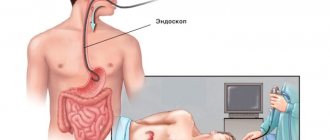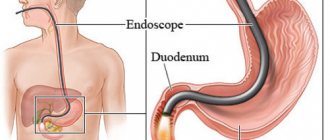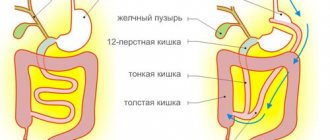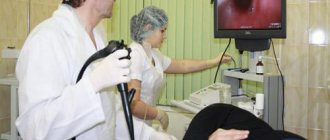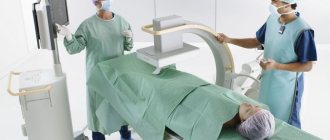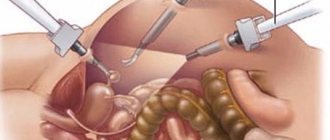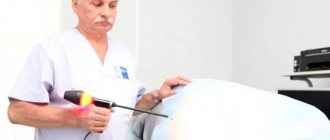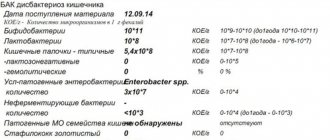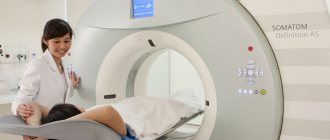Indications for X-ray examination of the gastrointestinal tract
An X-ray examination of the upper digestive tract is prescribed if the patient has the following symptoms:
- a feeling of heaviness in the abdomen and/or aching pain , which intensifies after a spicy meal or on an empty stomach;
- frequent nausea after eating;
- sharp decrease in appetite;
- the appearance of a bitter or sour taste in the mouth;
- tendency to constipation or diarrhea ;
- pain in the upper abdomen, which intensifies when pressed;
- sensation in the chest or heartburn (occurs mainly after eating);
- the appearance of white plaque on the mucous membranes of the mouth and tongue;
- increased gas formation in the stomach ;
- reducing body weight with unchanged diet and level of physical activity;
- suspicion of a violation of the integrity of the stomach wall.
Help In emergency situations, an X-ray examination of the stomach is performed if it is not possible to do an ultrasound, CT or MRI as soon as possible. This opportunity is used especially often in the surgical department and intensive care unit.
Chest x-ray
- Plain radiography of the chest organs allows you to diagnose pathological changes in the skeleton, lung tissue, the condition of the pleural cavity, and assess the size and shape of the shadow of the heart and adjacent vessels.
There is no need to prepare for this study.
- Bronchoscopy and bronchography make it possible to obtain X-ray images of the trachea and bronchi after the administration of contrast. Needed for studying parts of the lungs that are inaccessible to endoscopy, when diagnosing various bronchopulmonary diseases and/or planning surgical intervention.
As a preparation, if there is sputum, the lungs should be cleared of it, for example, with the help of expectorants prescribed in advance before the study. On the day of the study, it is forbidden to eat or drink.
How is radiography performed?
The examination should be carried out only in an X-ray examination room.
The patient arrives at the agreed time, after which he takes off his clothes in such a way as to completely expose the abdominal area. Diagnostics can be carried out both in a horizontal and vertical position of the patient (depending on the decision of the attending physician).
If the study is carried out in a horizontal position, the patient lies on his back on a special couch; if in a vertical position, he stands close to the screen. After establishing the correct position, the doctor and accompanying persons go to a special room, which is protected from x-ray radiation. The duration of the procedure does not exceed 5-7 minutes.
Help If
contrast enhancement , then the patient is given a dissolved preparation of Barium sulfate , after which a series of photographs are taken at certain intervals.
How to prepare for the examination?
General rules
Preparing the patient for radiography of the esophagus is aimed at increasing the diagnostic information content. Why is it important? The presence of food or air in the digestive tract affects the quality of the images that the doctor receives.
24 hours before the X-ray examination, the consumption of alcoholic beverages is prohibited. They can irritate the mucous membrane, provoke the development of new ulcers, and also stimulate the production of gastric juice.
The patient is also advised to refrain from smoking on the day of the diagnosis. Substances contained in smoke are factors of aggression and also lead to vasospasm of the mucous membrane. also not recommended chewing gum , since chewing reflexively activates the production of gastric juice, and to brush your teeth immediately before the procedure.
Important The doctor must explain to the patient that numerous
folk tips that are aimed at reducing radiation exposure to the body are ineffective and can only reduce the quality of the image .
Preparation can be neglected only in emergency situations, when delaying time can lead to serious consequences for the health and life of the patient.
Features of the DIET
An important factor that often reduces the quality of the X-ray image is the accumulation of food and gases in the stomach cavity. Therefore, before a planned study, you need to refrain from eating for 8 hours . During this period of time, you can only drink water (but not strong tea or coffee) in small volumes.
Additionally, it is important to prescribe a diet 2-3 days in advance , to exclude foods from the diet that can contribute to increased gas formation. This is especially important for older patients who have chronic digestive problems. Therefore, they are prohibited from the following products:
- alcoholic and carbonated drinks;
- legumes;
- fresh bakery products;
- cuts, whole grain wheat;
- fermented milk products (kefir, yogurt, fermented baked milk);
- juices from apples, pears;
- grapes, raisins;
- fatty meats and fish;
- most types of cabbage (fresh, pickled and sour), Jerusalem artichoke;
- onions, turnips, radishes, Chinese salad;
- ice cream;
- products containing chocolate;
- barley;
- pasta.
Additionally, unload your diet by increasing the frequency of meals up to 5-6 times a day in smaller portions . This will allow the digestive tract to more quickly digest and break down food products, which will reduce the time they spend in the stomach cavity and the severity of gas formation.
At the same time, the diet should remain as balanced . The patient should consume sufficient amounts of nutrients and vitamins with food.
An example of a diet for 2 days before an x-ray of the stomach is given in the following table:
| 1 DAY | |
| First breakfast (8-9 am) | 2 soft-boiled eggs, buckwheat porridge with butter, a glass of warm still mineral water |
| Second breakfast (10-11 am) | Lightly warmed cottage cheese with sugar and weak green tea |
| Lunch (14-15 pm) | Vegetable soup (can be with thoroughly cooked meat), mashed potatoes with a steamed cutlet and a cup of weak tea |
| Afternoon snack (17-18 pm) | A few fresh bananas, a glass of compote |
| Dinner (20 pm) | Oatmeal (cooked in water), lean fish fillet and a glass of still water |
| Before bed (10 pm) | Dry cookies with a mug of weak herbal tea |
| DAY 2 | |
| First breakfast (8-9 am) | Boiled rice porridge with vegetable salad (cucumbers, tomatoes, carrots), a glass of still mineral water |
| Second breakfast (10-11 am) | Baked apple, a cup of weak green tea |
| Lunch (14-15 pm) | Vegetable soup with buckwheat and poultry (for example, chicken), buckwheat porridge with chicken Kiev, carrot and beet salad, a glass of compote |
| Afternoon snack (17-18 pm) | Scrambled eggs and a glass of still water |
| Dinner (20 pm) | 3-4 cheesecakes with sour cream and a cup of weak herbal tea |
Taking medications
Often, before an X-ray examination, the doctor additionally prescribes certain groups of medications:
- Adsorbents (activated carbon, Smecta). This group of drugs is capable of absorbing toxic substances, gases and food particles in the lumen of the digestive tract. They are usually given 2-3 hours before the expected start of the diagnosis.
- Antispasmodics (platifilin, drotaverine) reduce the tone of the smooth muscle muscles of the digestive tract. This is especially important if the patient has pain, or if a study using contrast agents is planned. They are given to the patient or administered 60-90 minutes before an x-ray of the stomach.
- Drugs that reduce the production of gases in the digestive tract (simethicone, espumizan). They prevent their accumulation in the lumen of the stomach. The medication is taken 6-8 hours before the test.
Please note: When scheduling an x-ray, be sure to tell your doctor what other medications you are taking. This is important, since the use of certain drugs (antacids, non-steroidal anti-inflammatory drugs) can reduce the diagnostic information.
Preparation for fluoroscopy of the stomach
X-ray of the stomach is one of the informative types of diagnostics that allows you to identify pathological changes. This alternative examination is carried out in cases where other diagnostic methods, such as ultrasound and FGS, are ineffective.
X-ray allows you to evaluate the structure of the mucous membranes, the location of organs, patency using a contrast agent, involves radiation, so it is important to know how to properly prepare for an X-ray of the stomach.
What is the procedure
X-ray of the stomach is an instrumental method for examining the gastrointestinal tract, with the help of which informative information is obtained. During the procedure, the location of the gastrointestinal tract organs, sizes and changes in them are determined.
The stomach is a hollow organ, so to study it, radiography is performed with a contrast agent - a suspension of barium sulfate.
Indications
The need for a diagnostic study is determined after a preliminary examination of the patient and collection of anamnesis.
An X-ray of the stomach is prescribed in the following cases:
- patient complaints of pain in the epigastric region;
- disorders of the gastrointestinal tract (nausea, vomiting) not associated with poisoning;
- difficulty swallowing and passing food;
- belching, heartburn;
- a sharp decrease in body weight, blood in the stool;
- identification of compactions by palpation;
- suspicion of the presence of foreign bodies;
- condition after surgery on the gastrointestinal tract.
The importance of proper preparation
Radiography is a test in which a radiologist takes an image. Fluoroscopy allows you to monitor the gastrointestinal tract in dynamics and take pictures in different positions.
Both methods involve the patient receiving a dose of radiation, so it is important to perform the procedure without the need for a repeat study. The leading role here is given to proper preparation for x-rays.
If you conduct research right away, the results may be incorrect. Therefore, it is important to obtain information from your attending physician on how to properly prepare for the examination.
The radiation dose during one procedure is safe for humans.
Main stages of preparation
Fluoroscopy of the stomach does not require special preparation. But to get the most truthful result, you should adhere to several rules:
- 2-3 days before the x-ray, you should not take medications other than Espumisan or activated charcoal. These products will help cleanse the gastrointestinal tract of mucus.
- On the day of the examination, smoking and chewing gum are prohibited.
- The subject needs to remove metal jewelry and dentures.
Eating before the examination
The patient is warned that the examination is carried out on an empty stomach. You should not eat food the morning before the diagnosis. You are allowed to drink some water.
Before radiography, the last meal is allowed no later than 7-8 hours before the examination. Before fluoroscopy with barium - at least 12 hours before the procedure.
Diet
A diet before undergoing an examination is prescribed to older people.
If the subject does not complain, this is not required. Doctors recommend eliminating heavy, difficult-to-digest foods from your diet .
3 days before the examination, you need to avoid foods that cause increased gas formation.
Nutrition rules
To ensure a clear result, 3 days before undergoing X-ray examinations of the gastrointestinal tract, you need to avoid foods that contribute to increased gas formation:
- all types of cabbage;
- Rye bread;
- legumes;
- potato;
- carbonated drinks;
- fatty, fried foods;
- dairy products;
- baking
It is recommended to eat porridges with water, steamed dishes made from lean meat or fish.
If a patient is hospitalized with a stomach disease, he is prescribed a special diet from the first days of his stay in the hospital. It is important to avoid taking dairy products before the examination.
Preparing for a barium test
When preparing a patient for a barium fluoroscopy of the stomach, the physician should identify the possibility of an allergic reaction. In case of allergies, another contrast agent containing iodine is selected.
A suspension of barium sulfate is not dangerous to health, except in rare cases of individual intolerance. This substance is capable of absorbing radiation without being absorbed into the gastrointestinal tract.
With the help of such a study, a more complete picture of the functioning of the system and clear pictures are obtained.
The patient should adhere to a diet for 3 days before the procedure.
During the examination, the patient is asked to drink two sips of the suspension, and during its passage the walls of the esophagus are examined. Then you need to drink the remaining barium (about a glass), and the radiologist examines the organs and takes pictures.
For patients who are prone to constipation, before undergoing the procedure, it is recommended to cleanse the intestines with an enema before bed and in the morning on the day of the x-ray.
How does the procedure work?
The procedure algorithm is as follows:
- a radiologist examines the organs;
- the patient takes a barium suspension, and the specialist observes the filling of the stomach, the rate of filling and the structure of the mucosa.
The examination takes no more than 40 minutes.
About an hour after administration, barium enters the duodenum, from where it is completely excreted in a short time, and after 1-1.5 hours the stomach is freed from the contrast agent.
The radiologist takes pictures from different positions of the body: lying (on the side, back, stomach) or standing.
Using the Trendelenburg method, a picture of the stomach is taken in a position where the pelvis is elevated at an angle of 35-45 degrees. The doctor asks the patient to hold his breath for a while. This image allows you to determine the presence of a hiatal hernia.
Results of the procedure
During diagnosis, the following deviations can be identified:
- volume of the stomach (its contraction or increase);
- ulcerative lesions of the mucous membrane;
- polyps and neoplasms, predisposition to their development;
- inflammatory processes;
- violations of the lumen of organs;
- deformation of the walls or their displacement.
Contraindications
The X-ray procedure is not dangerous for the patient. In some cases, constipation and discoloration of stool may occur after taking barium. Normally, these phenomena disappear after 2 days. If it lasts longer, you should see a doctor .
There are contraindications for performing an X-ray of the stomach. These include:
- allergy to contrast agents;
- prolonged bleeding in the gastrointestinal tract;
- pneumothorax;
- serious condition of the patient;
- pathologies of the thyroid gland;
- pregnancy and breastfeeding.
According to indications, X-ray examinations are also performed during pregnancy, but the procedure is possible only in the 2nd and 3rd trimester.
Examination using a contrast agent is contraindicated in patients with diabetes, patients with severely impaired renal and liver function, and severe tuberculosis.
Conclusion
According to the requirements of the Radiation Safety Law, X-ray examinations are prescribed only after undergoing ultrasound, FGS and laboratory tests, i.e. non-X-ray methods.
If the examination is not very informative, an x-ray of the stomach is performed. A repeat procedure is permissible only after a year.
Source: https://vseozhivote.ru/diagnostika/podgotovka-k-rentgenu-zheludka.html
X-ray with contrast
When conducting an X-ray examination of the stomach using contrast (Barium preparations), it is necessary to take into account the fact that not only the esophagus or stomach is diagnosed, but also the intestines. laxatives the day before the procedure in order to maximally clear it of feces.
Sometimes a cleansing enema is also required on the day of diagnosis . It is necessary to discontinue medications prematurely that can slow down the motility of the digestive tract (muscle relaxants, narcotic analgesics).
Stomach X-ray or gastroscopy – which is better?
Esophagoduodenoscopy (FGDS) is an endoscopic type of examination, during which a special instrument is inserted through the mouth to examine the condition of the inner wall of the esophagus, stomach, and duodenum.
What is better - X-ray or FGDS? These procedures complement each other and have different indications. Gastroscopy must be done before the x-ray to exclude the presence of perforations in the walls of the organs - otherwise barium will penetrate into the abdominal cavity, which will cause peritonitis.
Gastroscopy is safer for humans
Gastroscopy is safer, but causes severe discomfort when inserting a probe; not every person manages to swallow it, so many patients are first given antiemetic drugs (Cerucal), and anesthetic sprays are used to treat the larynx. After FGSD, discomfort in the throat may persist for two days.
If during FGSD pathologies of the mucous membrane are identified, then a section of tissue must be taken for histological examination. This diagnostic method is considered the best for identifying cancerous degeneration at an early stage.
In children
Some difficulties may arise when it is necessary to conduct radiography in young children (up to 5-6 years).
It is important to explain to them in advance that the procedure is absolutely painless. If the child remains anxious, you can show how an x-ray is done to another patient in order to calm him down.
also important for parents to remain calm themselves , since their emotional state is easily transmitted to their children. Also, medical personnel should be understanding of the child’s fear and remain friendly. Cases where a doctor scares or yells at a child are completely unacceptable.
An important aspect of the examination is the presence of parents nearby during the x-ray. This will significantly calm the child and follow all the necessary instructions from the doctor. To protect against X-ray radiation, parents or accompanying persons are given special gowns with lead plates , which protect the most important parts of the body.
Help You can also take your child’s favorite toys with you. This will create a more comfortable environment in the X-ray room.
The time for complete refusal of food in children is shorter than in adults and depends on their age.
| Child's age | How long should you refrain from eating? |
| Up to a year | 2-3 hours |
| 1-2 years | 3-4 hours |
| 3 years | 4 hours |
| 4-6 years | 4-5 hours |
| 7-8 years | 5 o'clock |
| 9-10 years | 6 hours |
| 11-12 years old | 7 o'clock |
| 13 years and older | 8 ocloc'k |
Important At the same time, if a one-year-old child is very hungry , then instead of milk or formula, he can be given a small amount of water to drink, which will reduce the feeling of hunger for a certain time.
What to take with you?
If we talk about documents, then when going for diagnostics in a public clinic you need to take with you a medical history or an outpatient card of the patient, a referral from the attending physician (with a seal) , a passport and an insurance policy (if available).
This will allow diagnostics to be carried out free of charge in a significant number of medical institutions. If radiography is carried out for a fee in a private clinic, then a referral from a doctor and a document that identifies the patient’s identity is sufficient.
Help Data from previous examinations (X-ray, ultrasound, CT, MRI) are of great importance, since they can facilitate the interpretation of diagnostic results. Therefore, it is always recommended to take them with you.
It is also advisable to bring food with you (for example, several sandwiches, bananas or croissants) so that you can have a snack immediately after completing the examination . When conducting radiography with contrast , it is recommended to buy 1.5 liters of still mineral water , which should be drunk after the diagnosis. This will help remove the Barium drug from the patient’s body more quickly after fluoroscopy.
